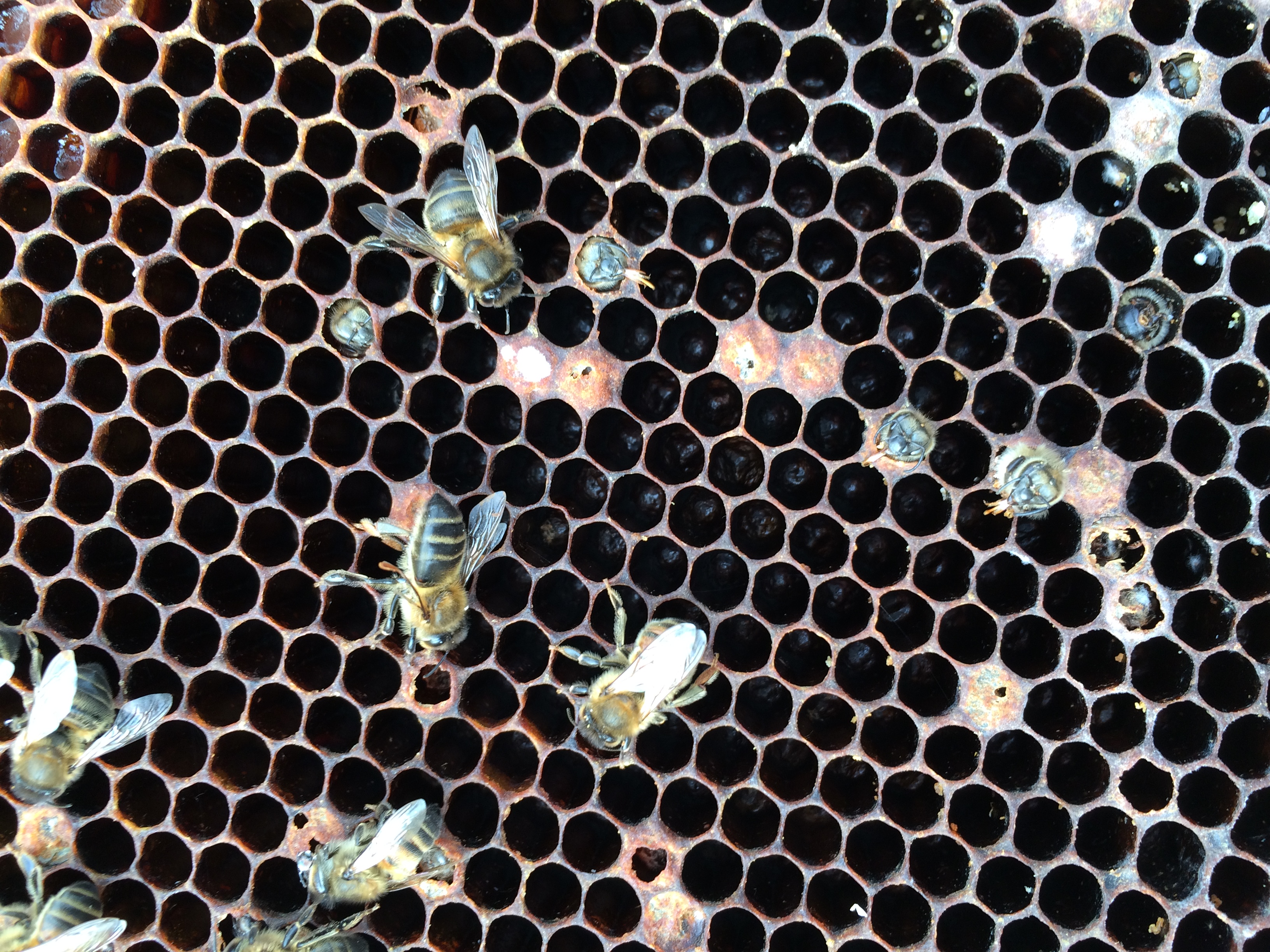-
 What Happened Here?
What Happened Here?
So, begun the slightly less than heartwarming clear up of this winter's losses. 4 and a Nuc went into winter, all but one died.
All the hives:
- Were treated with Thymol in August
- Were treated with OA in the last week in December, when all were still alive
- Had plenty of honey in the brood box, all tested so far is liquid and capped.
- Had a pack of Fondant added when the OA was done, some of the hives made good progress through the fondant so were definitely alive for a while following the OA application.
All of the dead ones looked at so far have clear signs of dysentary on the top bars of the frames.
When I went through the first, this is what I found (apologise for the size, I will try and thumnail them shortly):



On this particular hive, the bees are on a frame with no food on it though if the white stuff is visible, it's fondant so they had easy access to it, the honey was at the other end of the brood box. There was no open brood or eggs visible other than the small patches of sealed/emerging brood in the photo.
The colony that I moved up at the end of january and one other are the only ones still alive, both very small in terms of size (to the point that I transferred one of them straight into a Nuc to try and make life a bit easier for them). The hive that was already in situ also showed signs of dysentary on the frames and on the front of the hive so was transferred onto new comb (bar the one frame with a small patch of brood) and given a feed of syrup (there is a huge field of OSR next door that is still a little way off being fully in flower).
I don't think that there is a single cause here, I think there are a number of things contributing to the demise of the colony (one of the photos might hint at what I suspect), but I'm interested in what others think.
Last edited by Neils; 13-04-2015 at 12:56 PM.
-
Senior Member


Main thing is isolation starvation.
Also looks like a mite problem with regard to the damaged cappings and half emerged bees.
If you have dysentery that could well indicate a nosema problem as well.
The level of mould would suggest that colony is a long time gone, maybe a cold spell in January or Feb.
-

I agree with Jon. With obvious lack of stores near the bees, bees in cells with tongues out it looks like the main cause of death is starvation or death from cold due to insufficent stores available to generate the heat to maintain the cluster. While there is some evidence of faeces staining combs 1 and 3 it is very little in quantity so not likely to be a major factor. The perforated cappings may be related to Varroosis but bees also do that whenever bees die after cells sealed (part of hygenic behaviour?) Interestingly did anyone see the two light browny/orange fly pupae on first photo.
-

My best guess;
Colony weakened by varroa and associated virus (pull some of those nearly emerged bees with their tongues poking out and have a good look for varroa fras- white stuff near their sting- wing damage or stunted abdomen)
Final nail in the coffin was probably the oxalic which stripped their midgut and left them vulnerable to whatever caused the dysentery- probably nosema.
Things you could have done differently;
Treated earlier with thymol, resulting in healthier bees early on to store feed
Not dribbled acid over already compromised bees
This could be nonsense of course, just my best guess from the piccies and what you wrote above, and I've seen similar with some of my own bees.
-
 What Happened Here?
What Happened Here?
I did notice the pupae but haven't yet figured out what they are.
[edit] also I picked this one in particular as it was a strong colony in December. I'm reasonably happy in my own diagnosis which broadly mirrors Jon's and Masterbk though in less convinced that varroa is a primary cause given the drone sampling done last summer which did not suggest a particularly high mite count at the time.
I thought however that it might be interesting to put a few pics up especially as there are a few things going on I feel. I should have taken a photo before I dismantled the hive where the dysentery evidence was more pronounced.
I have another box still sealed awaiting clean up so if people are interested I will post more photos.
Last edited by Neils; 13-04-2015 at 05:39 PM.
-

2nd and3rd photos classic varroa death
Tags for this Thread
 Posting Permissions
Posting Permissions
- You may not post new threads
- You may not post replies
- You may not post attachments
- You may not edit your posts
-
Forum Rules







 Reply With Quote
Reply With Quote


Bookmarks